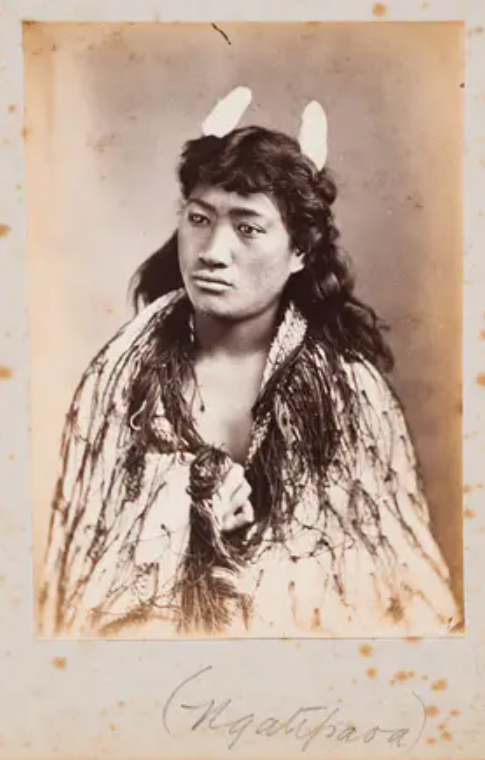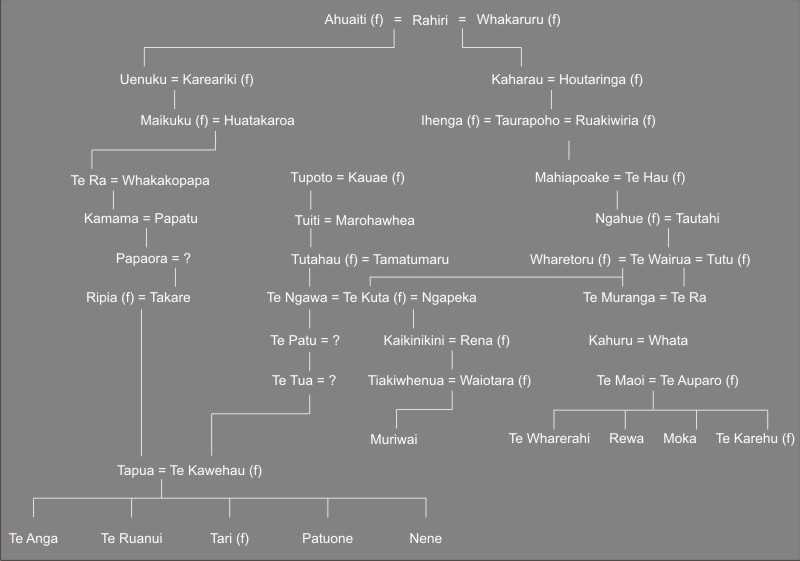

But this canoe was not ready for sea when other canoes departed to see those ships. When “Kahu-mauroa” was being fitted out on the Tamaki River to prepare her for the voyage to the North, Cook's ship visited Hauraki. The Ihu-tau (carved prow) was “Te manawa ngata-kore” (the heart not appeased) to signify the unavenged death of Ngatara. Her carved sternpost was “Te Ata haeata-roa” (the long glow of dawn) in reference to the dawn when Te Tapapakanga pa was attacked. Thereabouts the canoe was fitted out and made complete in all things. Ngati-Paoa then returned homewards, and Te Uri-o-Pou passed on eventually they portaged the canoe at Otahuhu. Before you pass on, I will weep over thee, O Kahu.” He then wept for the departing canoe, - 133 and embraced it as a token of sorrow.

Then Kaeaea thus addressed Totokarewa: “E To, it was my thought that all ills were avenged, but thou hast severed ‘Te Kahu-mau-roa’ the hairs of our ancestors. At last they came in sight, some were poling the canoe, some were dragging it along with lines from the river bank. Now Kaeaea considered he would be too late to prevent the launching of the canoe, and pressed on to a place on the Pa-hurihuri Creek, where he knew the navigators of the canoe must pass. This was the song sung by Toto-ka-rewa to encourage his people, who thus repeated his words in chorus:- Mate mai ai ki Whiti-nui The affliction brought hither from great Whiti. The channel of “Tortuous windings at Whiti,”

This is the song they listened to as the sound of the chorus sung by the throats of the hundreds of Te Uri-o-Pou resounded from afar through the stillness of the forest:- Kotia-te pu, waiho i koneiĬut away the base of the tree, and here leave it.Ĭut away the crown of the tree, and here leave it. Kaeaea, therefore, knew that the tree “Kahumauroa” was already felled and shapened, and was about to be launched into the Papakura Creek. Here they heard the canoe dragging songs of Te Uri-o-Pou tribe. Kaeaea and his men came by way of the Wairoa, and at last reached the ridge where is the look-out place (okiokinga) still known as Te Paepaetahi, whence can be seen the waters of the Papakura Creek (Pa-hurihuri), and which flows into the Manukau. That chief came with a party to see if they could surprise and circumvent the Uri-o-Pou canoe builders. They hastened to the coast, and word was conveyed to Kaeaea at Waiheke. Whilst they were at their long and laborious work in the forest their songs - 132 (sung to keep the time of the tree fellers) were heard by some Ngati-Paoa forest bird hunters. Thus it was that the tree “Kahu-mau-roa” was selected from which to build their canoe, after another tree which they had felled, had split in the process. At first it was intended to go by land, but Toto-karewa eventually decided upon a migration by sea to join their relatives in the North. He ordered his hapu to set about to prepare for their migration. He wished to emigrate to join his relatives in Ngapuhi. Nga-tara's younger brother Totakarewa now decided to leave the district with the remnant of his people. THE FELLING OF THE TREE AND BUILDING OF THE CANOE


 0 kommentar(er)
0 kommentar(er)
